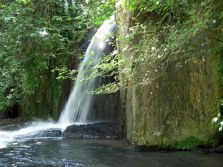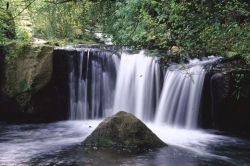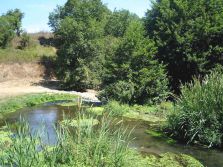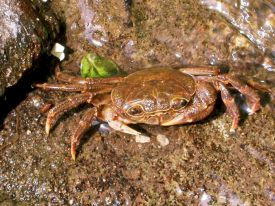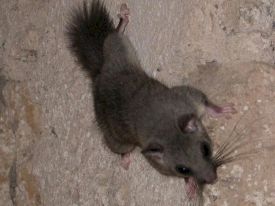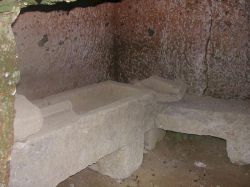Valle del Treja Park
Flora, fauna, ancient remains and walking paths in the Valle del Treja Park
> > > Click the pictures for a larger view < < <
Valle del Treja Park is located about 40 km north of Rome and consists of tuffaceous valleys and spurs created by the consolidation and erosion of the material erupted from the volcanoes of the Sabatine mountains which were active until about 60,000 years ago. The lakes of Bracciano and Martignano occupy two of these craters. The waters of the Treja stream together with the effects of rain have created an area of serpentine valleys and steep walls and pinnacles of tuffa rock which are now incorporated into the Parco Valle del Treja. The waterfalls and cascades, including the Monte Gelato falls, are fed by the Treja stream and numerous deep springs which are inhabited by freshwater crayfish and rare freshwater crabs. On the plateaux as well as in the glades at the bottom of the ravines there are Faliscans and Etruscan necropoli as well as remains from the Roman and mediaeval periods.
Flora of Valle del Treja
The southern slopes and tops of the tufaceous cliffs are scattered with holm-oaks, hackberries, mock privet and strawberry trees. On the valley floors or on north-facing slopes there are hornbeams, Montpellier maple and hazel. Riparian vegetation grows on the banks of the Treja stream.Fauna of Valle del Treja
Birdlife in the park includes moorhens, snipe, wood pigeon, kestrels and buzzards. Among the mammals represented here are the rare wild cat, porcupines, garden dormouse, edible dormouse, hedgehogs, badgers, weasels and foxes.There is also a rare species of freshwater crab, Potamon fluviatile, apparently the same species discovered in 1997 to be living under Trajan's forum in the canals built by the Etruscans and connecting to the Cloaca Maxima. That population is thought to be the only freshwater crabs living in a major city. Based on a genetic analysis, which demonstrated that those crabs were similar to Potamon fluviatile in Greece, researchers believe that the crabs were brought by the Greeks, some 3000 years ago, before the founding of Rome. Potamon fluviatile sometimes ventures out of the water into the forest and, unlike Asian freshwater crabs, does not return to the sea to breed.
Archaeology of Valle del Treja
Within this area there are interesting archaeological and historical vestiges of the Faliscans (falisci), who were related, in terms of customs and political agreements, to the Etruscans, but spoke Latin. Their territory extended from Mazzano Romano to the lower Viterbo area. Within the park, there are Faliscan necropoli, tombs, roads, water tunnels and fortification walls. Near the Pizzopiede hill, the Faliscans founded the city of Narce which today has almost completely disappeared.There are important Roman and mediaeval remains at Mola di Monte Gelato. The excavations between 1986 and 1990 provided evidence for use of the site from the early Imperial period to the Middle Ages and beyond. The Augustan villa complex was ornate, including gracious rooms, a courtyard with a pool, fine marble statuary, a fish-pond, cisterns, bath-house, temple-tomb, and some evidence indicating an aviary.
Walking and hiking trails in Valle del Treja
The Treja park offers several different itineraries. The paths are mostly well marked, so visitors can venture into the forest alone.
Ancient tomb in Valle del Treja Park

